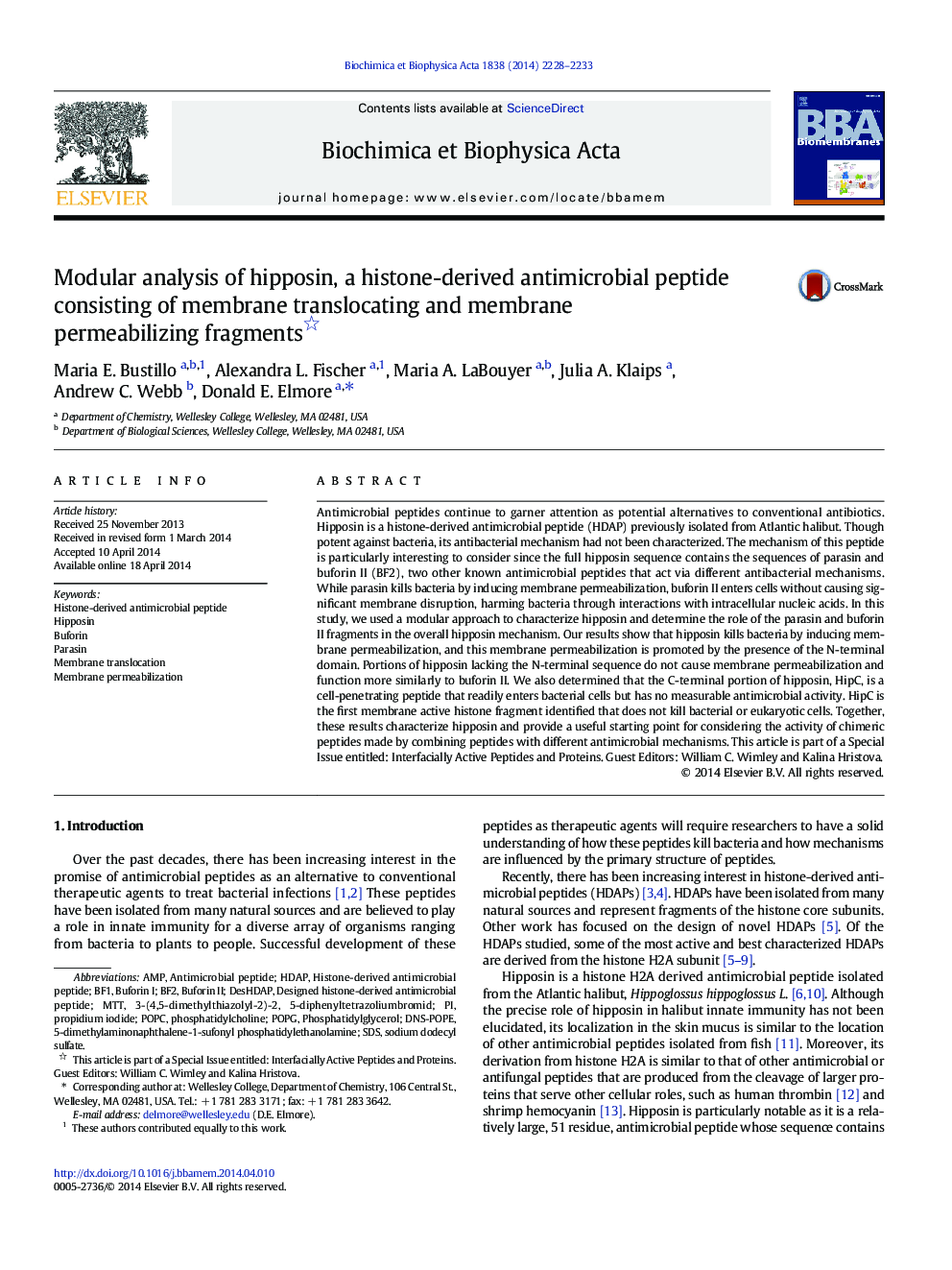| کد مقاله | کد نشریه | سال انتشار | مقاله انگلیسی | نسخه تمام متن |
|---|---|---|---|---|
| 1944180 | 1053188 | 2014 | 6 صفحه PDF | دانلود رایگان |

• Hipposin kills bacteria through a membrane permeabilizing mechanism.
• The parasin domain promotes the membrane permeabilization of hipposin.
• Portions of hipposin lacking the parasin domain translocate membranes.
• HipC, the C-terminal domain of hipposin, is a cell-penetrating peptide.
• HipC is the first membrane active histone fragment that does not kill bacteria.
Antimicrobial peptides continue to garner attention as potential alternatives to conventional antibiotics. Hipposin is a histone-derived antimicrobial peptide (HDAP) previously isolated from Atlantic halibut. Though potent against bacteria, its antibacterial mechanism had not been characterized. The mechanism of this peptide is particularly interesting to consider since the full hipposin sequence contains the sequences of parasin and buforin II (BF2), two other known antimicrobial peptides that act via different antibacterial mechanisms. While parasin kills bacteria by inducing membrane permeabilization, buforin II enters cells without causing significant membrane disruption, harming bacteria through interactions with intracellular nucleic acids. In this study, we used a modular approach to characterize hipposin and determine the role of the parasin and buforin II fragments in the overall hipposin mechanism. Our results show that hipposin kills bacteria by inducing membrane permeabilization, and this membrane permeabilization is promoted by the presence of the N-terminal domain. Portions of hipposin lacking the N-terminal sequence do not cause membrane permeabilization and function more similarly to buforin II. We also determined that the C-terminal portion of hipposin, HipC, is a cell-penetrating peptide that readily enters bacterial cells but has no measurable antimicrobial activity. HipC is the first membrane active histone fragment identified that does not kill bacterial or eukaryotic cells. Together, these results characterize hipposin and provide a useful starting point for considering the activity of chimeric peptides made by combining peptides with different antimicrobial mechanisms. This article is part of a Special Issue entitled: Interfacially Active Peptides and Proteins. Guest Editors: William C. Wimley and Kalina Hristova.
Figure optionsDownload high-quality image (43 K)Download as PowerPoint slide
Journal: Biochimica et Biophysica Acta (BBA) - Biomembranes - Volume 1838, Issue 9, September 2014, Pages 2228–2233